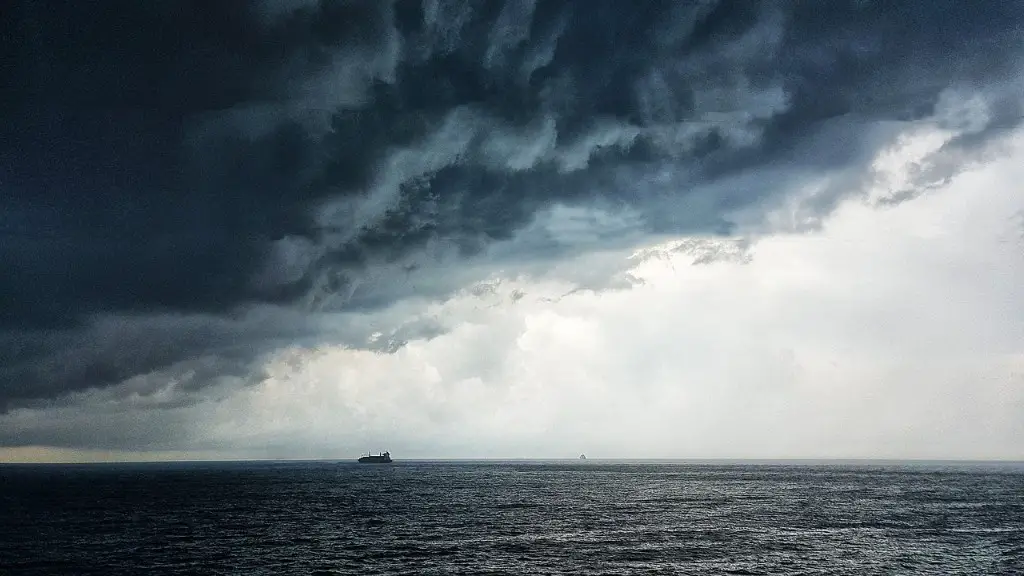The South China Sea has been a bone of contention between several countries in Southeast Asia as well as China. It stands as one of the most volatile areas in Asia and its potential to become a major flashpoint has become more palpable in recent years. In this article, we will take a look at the South China Sea conflict and delve into what has been happening in the region.
The South China Sea conflict has its roots in the rival claims for maritime sovereignty by several countries. The interests of these countries in the region conflict, with each party asserting claims to the waters and its precious resources. China has claimed 90 per cent of the South China Sea, including the Spratly and Paracel Islands, while other Southeast Asian countries such as Vietnam, Malaysia, the Philippines, Brunei and Taiwan also have claims over much of the South China Sea.
The Chinese government’s ambition to extend its commanding presence in the South China Sea has been growing steadily and has been the defining factor behind the ongoing conflict. China has relied heavily on its maritime strength as well as economic clout to strengthen its foothold in the region. Beijing has employed island building, militarization and reclamation of land from the South China Sea to expand its activities in the area, triggering alarm in neighbouring countries.
The United States has taken a strong stance against China’s expansion and has conducted a number of freedom of navigation exercises in the South China Sea. In 2018, a United Nations tribunal ruled that China’s expansionist activities in the region were in violation of international law, leading to a strained relationship with the United States. This has further exacerbated tensions between the two global powers.
Despite the numerous legal and diplomatic efforts, the conflict in the South China Sea continues to simmer. China has signed a code of conduct with the Association of Southeast Asian Nations (ASEAN), but has failed to fully enforce it. ASEAN countries, along with the United States, have voiced their concerns over the situation in the South China Sea, but China has been mostly unresponsive to their calls.
The stakes in the South China Sea conflict are high, and it is imperative that all parties involved strive for a peaceful resolution. The conflict has a potentially devastating impact on the world’s economy as one-third of the world’s maritime trade passes through the South China Sea. There is also the danger of military confrontations as well as disruption of vital energy resources, which would have a profound effect on the international community.
Environmental Impact of the Conflict
The conflict in the South China Sea has already taken a toll on the environment, with fish stocks depleting, coral reefs dying off and sea creatures being threatened due to illegal fishing, pollution, and destruction of mangroves. The sheer number of vessels traversing the waters pose a huge risk to the delicate marine ecosystems, while sea levels rising as a result of global warming will likely further exacerbate the situation in the coming years.
The rising tensions in the South China Sea have hindered attempts to properly address the environmental issues, as conservation efforts require cooperation between countries. Nonetheless, several non-governmental organizations have taken it upon themselves to raise awareness about the environmental destruction that has taken place in the region and to take action to restore some of the damage that has been done.
The brunt of the damage inflicted on the environment has largely been borne by the local communities and fishermen that depend on the resources of the South China Sea for their livelihoods. As a result of the destruction of their habitats, many have had to find alternate sources of income, often leaving them vulnerable to exploitation and poverty. The long-term ecological damage of the conflict may have implications that reach far beyond just the immediate political issues.
Implications for Regional Security
The conflict in the South China Sea poses a major security threat to the region, with rivalries between blocs of countries causing further instability. The constant jostling for power in the region has spilled over into military confrontations and saber-rattling, with the US and China facing off in direct confrontation on multiple occasions. In the current security environment, any minor misstep could easily spark a larger crisis and breakdown of peace in the region.
Along with the security implications of the South China Sea conflict, there is also a danger of economic fallout, with investments in the area slowing and market uncertainties rising. International companies have been largely avoiding the South China Sea out of concern for potential clashes, while many maritime rules and regulations have yet to be properly established which makes the waters a risky venture for any business.
The unresolved disputes in the South China Sea could also lead to damaging rifts between countries, with economic and diplomatic ties suffering as a result. The region has already seen its share of enmity and mistrust, and the ongoing conflict further deepens the gulf between rival countries. To ensure a peaceful resolution to the dispute, governments must take active steps to foster better inter-regional cooperation and dialogue.
Engagement of International Organizations
International organizations such as the United Nations, the International Tribunal for the Law of the Sea and the ASEAN have all been locked in talks in an attempt to find a peaceful solution to the South China Sea conflict. While their efforts have led to some minor progress, the conflict remains unresolved and their attempts to facilitate dialogue between the countries involved have yet to yield any major breakthroughs.
Nevertheless, their engagement has served as a stabilizing force and prevented what could have been an even more volatile situation from escalating. For the conflict to be properly addressed, the efforts of international organizations must be supported and encouraged. Otherwise, the South China Sea conflict will remain a volatile and destructive force in the region.
Objectivity of Media Coverage
The media coverage of the South China Sea conflict has been somewhat one-sided and has largely portrayed China as the aggressor with its neighbour countries as victims of its expansionist ambitions. Little has been done to provide a more objective assessment of the situation, with most coverage ignoring the role of other countries in the conflict.
This has caused a significant information imbalance and contributed to the current state of affairs. While China has been blamed for its assertive stance, other countries have been given a free pass on their own activities. The media should be more willing to provide an impartial account of the conflict in the interest of providing a broader perspective.
Conclusion of the Conflict
Only through negotiations and good faith diplomacy can an amicable resolution to the South China Sea conflict be achieved. The countries involved must work together to find an equitable solution which respects the rights of all those involved in the dispute and takes into account their interests.
Despite the numerous challenges that must be overcome, the only way forward is through dialogue and peaceful cooperation. Only then can the security and economic interests of the region be protected, and the environment, local communities and international relations be safeguarded.




